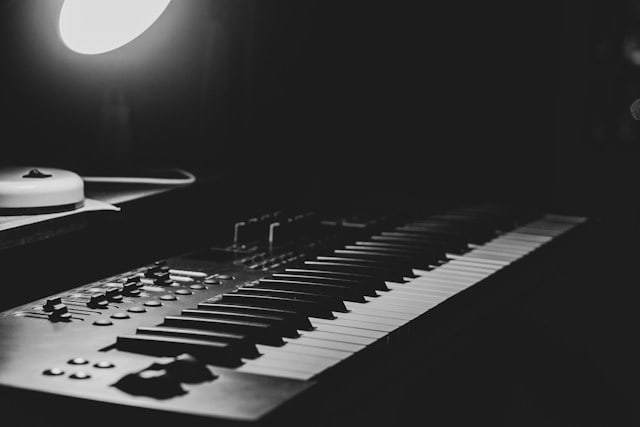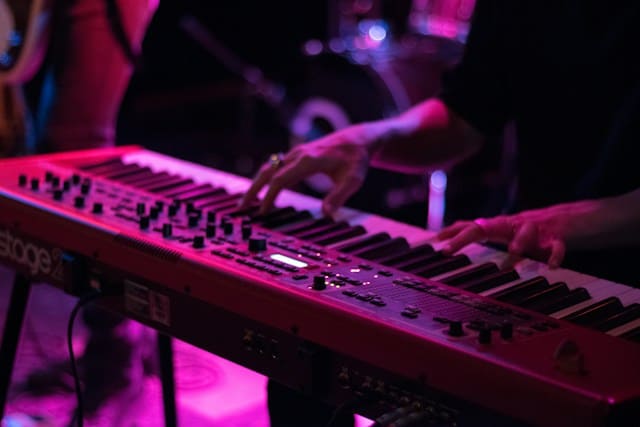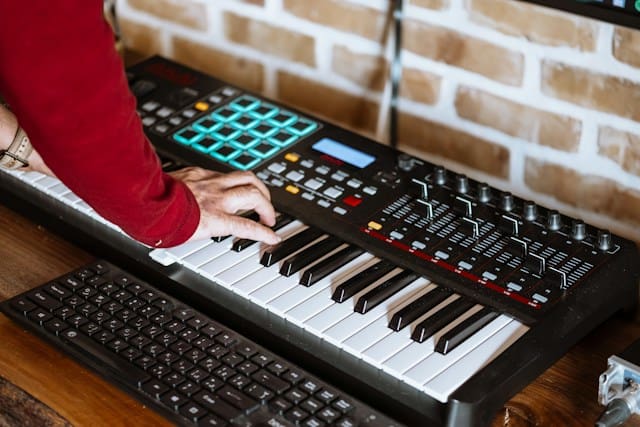Synthwave, a genre celebrated for its nostalgic embrace of 1980s sounds, is a captivating musical journey through time. Among the many elements that contribute to the distinctive charm of synthwave, the choice of keys plays a crucial role in shaping the mood, atmosphere, and overall sonic character of each composition. In this blog post, we’ll explore the typical keys that often find a home in the lush landscapes of synthwave, uncovering the unique tonalities that help define this genre.
Major Keys for Uplifting Vibes:
One of the characteristic features of synthwave is its ability to evoke a sense of optimism and euphoria. Major keys, with their bright and uplifting tonalities, play a significant role in achieving this effect. Synthwave tracks in major keys often carry a sense of nostalgia tinged with positivity, creating a sonic experience that transports listeners to a utopian vision of the future.
Minor Keys for Moody Nostalgia:

On the flip side, minor keys are a staple in synthwave, contributing to the genre’s moody and introspective undertones. The melancholic and emotive qualities of minor keys, especially in the Dorian and Aeolian modes, help artists channel the wistful spirit of the 80s. This choice lends itself well to crafting introspective soundscapes that resonate with listeners on a deeply emotional level.
Modal Exploration for Sonic Versatility:
Synthwave artists often embrace modal exploration to inject variety and uniqueness into their compositions. Modes like the Dorian, Phrygian, and Mixolydian offer distinct flavors that allow for sonic experimentation. The use of different modes within a song or album can create a rich tapestry of sounds, keeping the listener engaged and intrigued.

Modulation for Dynamic Shifts:
Modulation, or changing from one key to another within a composition, is a technique frequently employed in synthwave to introduce dynamic shifts and maintain interest. The seamless transition from one key to another can elevate a track, adding complexity and depth to the overall sonic narrative. This technique is often used to build tension, create climactic moments, or transition between different sections of a song.
Chromaticism for Futuristic Edge:

Synthwave’s fascination with the futuristic aesthetics of the 80s is often reflected in the use of chromaticism. Artists incorporate chromatic passages and unconventional harmonic choices to infuse a sense of modernity into their compositions. This departure from traditional diatonic scales adds a futuristic edge to the music, pushing the boundaries of sonic exploration.
Conclusion:
In the realm of synthwave, the choice of keys is a nuanced and deliberate artistic decision that significantly shapes the genre’s sonic landscape. From the bright optimism of major keys to the moody introspection of minor keys and the adventurous spirit of modal exploration, synthwave artists skillfully navigate the keys to create immersive and evocative musical experiences. As the genre continues to evolve and push boundaries, the exploration of keys remains a key element, ensuring that synthwave continues to captivate and transport its audience through a mesmerizing sonic journey.
Recent Posts
Exploring the Analog vs. Digital Debate in Synthwave Music Production
In the realm of electronic music production, particularly within the vibrant genre of synthwave, the debate between analog synthesizers and digital VSTs (Virtual Studio Technology) has been an...
In the world of music composition, the choice of key can significantly influence the mood, emotion, and overall feel of a song. Each key has its own unique characteristics, from the bright and...

